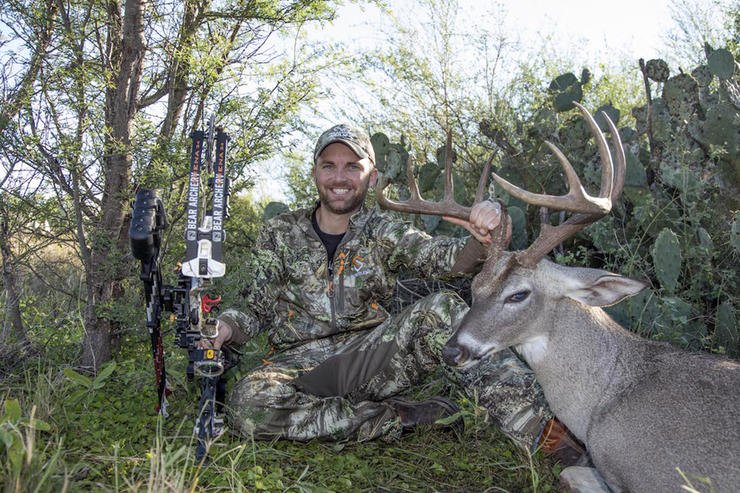5 Myths About Buying Hunting Land
By JOSH HONEYCUTTNovember 30, 2001

Most deer hunters dream of owning their own land, but many believe it’s out of their reach. The thought of buying land can cause a lot of anxiety, but a lot of that is due to a few rampant misconceptions. In reality, buying land is a fairly simple process. At least, most of the time. Realtree United Country’s Slade Priest shared his perspective on the myths that most commonly muddy the waters.
Myth No. 1: The Process is Too Complex
From relationships to work, people tend to make things more difficult than they need to be. That can include buying land.
“People are intimidated by the buying process,” Priest says. “But it’s really not that hard. Working with a land pro makes it easier. They have people in their back pocket to make it simpler: bankers, surveyors, biologists, loggers and more. Don’t spend time filling up your tool box. Use theirs instead.”
Consulting with a land pro will result in a smoother buying process. It reduces your work load and liability. Plus, it gives you peace of mind and an outside perspective on a large financial decision.
Myth No. 2: Hunting Land is not a Good Investment
Some people think hunting tracts aren’t good investments. The old way of thinking is that you have to farm or develop for it to be a responsible purchase. That’s wrong. Anything can be a good investment as long as someone else wants it. And people wanting good hunting land.
Other key components of good hunting land investments include:
- The property is projected to hold or increase its value
- The tract remains attractive as a hunting property
- The buying market is projected to maintain or improve
“You can flirt with that line between economical investments and recreational hunting tracts,” Priest says. “Just because it’s meant for hunting doesn’t mean it can’t help pay for itself.”
According to Priest, the key is to purchase lands that look good on paper and in person. Hunters are notorious for judging a piece of ground based on the aerial view. By purchasing land that looks good from above and is actually good in person, too, you increase the salability of that tract. Furthermore, making improvements creates additional attraction and value.
Myth No. 3: You Need a Lot of Money
Buying good hunting land doesn’t always require a massive checking account. A fat piggy bank will do in some instances. The key is to find the right property. Not the biggest one.
“Sure, the more money you have, the more land you can buy,” Priest says. “But acreage is not the most important factor. For example, I bought and sold a piece that connected to government land. I put food plots in and cameras out. Three bucks that anybody would shoot showed up on that 40-acre farm. Do your research and buy right.”
Talk to locals. Consult record books. Use all available resources to figure out where big deer live. Then, find a property in the area with food, water and cover. Make sure it’s huntable, too. Hot stand locations aren’t enough for small properties. Quality entry and exit routes are crucial.

Buying your own piece of ground is the first step in creating the dream farm you've always wanted. (Realtree United Country photo)
Myth No. 4: Leasing Is Better Than Buying for Middle Class Hunters
Everybody and their sister leases hunting land these days. Priest says you should buy a hunting property instead. Is a real estate agent biased? Maybe a tad. But it’s hard to argue with his logic.
“People say it all of the time — they just want to lease,” Priest says. “Well, let’s look at your typical lease. That’s $2,000 per year, not including food plots, treestands and other add-ons that’ll cost you another $5,000 or so. In 10 years, that’s $25,000 that could’ve gone toward land to own. Putting money into land is like putting money in a piggy bank. Plus, it means more when you kill a deer on your own ground.”
Leasing land is like leasing a car. It’s fun while it lasts. But it’s gone once the fun is over. You have the freedom to do what you want with land when the deed is in your own hand.
Like anything else, there’s a time to lease and a time to buy.
Myth No. 5: Every Rural Tract Will Have Good Deer Hunting
Don’t get in a hurry to buy. Just because it’s outside city limits doesn’t mean it’s great for deer hunting. Ground with really mature timber, heavily used pastures, frequent human intrusion, or a general lack of food, cover or water can mean a place that isn’t ideal for deer hunting.
“Many people think the majority of rural tracts have good deer hunting. That isn’t true,” Priest says. “Do your own research. Every tract isn’t for everyone. Some people just want to kill deer and fill freezers. Others want to kill mature bucks, or have a place set up for bowhunting. Still, there are others who want both.”
Many people think there are more deer than there really are.
“A lot of hunters think they can kill more deer off a property than they truly should,” Priest said. “You can’t kill five bucks a year on 100 acres without hurting the age structure. When buying land, don’t expect more deer to be on it than there actually are. There isn’t a magic briar patch full of mature mystery bucks. If you’re running trail cameras right, you’ll capture 80 percent or more of the local deer on camera.”
Basically, once you do buy that little slice of earth pie, don’t expect it to taste better than it should. Have realistic expectations.
Although, it will taste pretty good.
